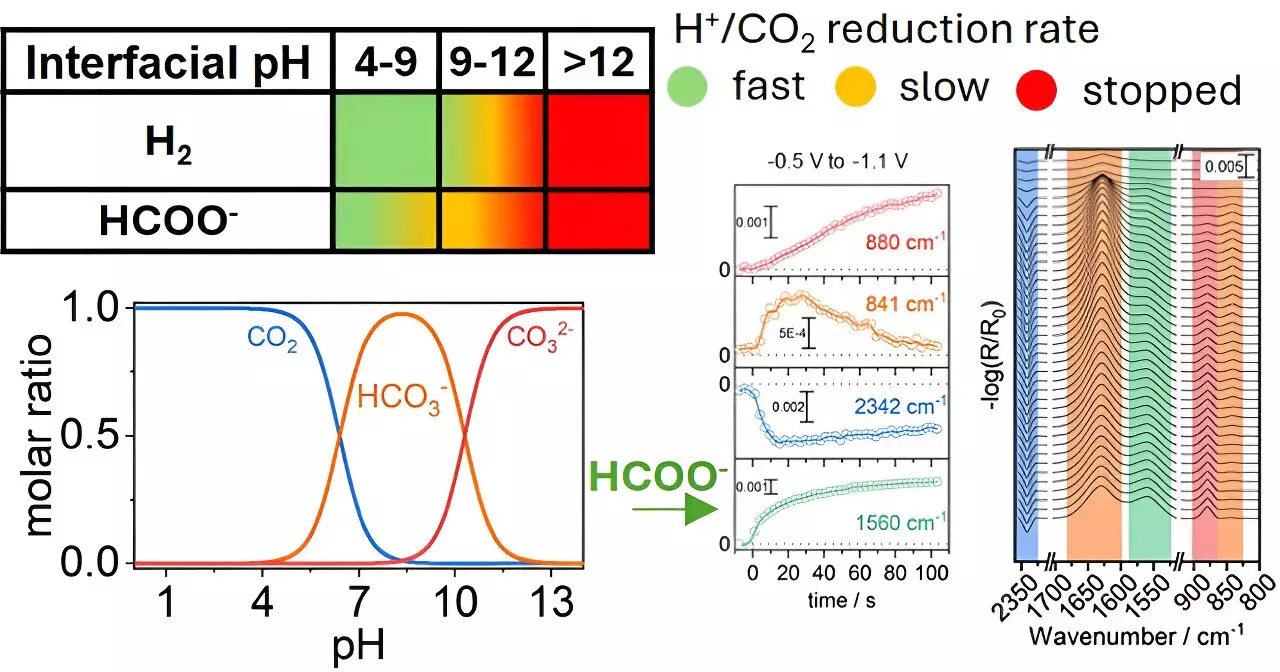In the quest for sustainability, the conversion of carbon dioxide (CO₂) into valuable chemicals presents a promising pathway. Researchers are continuously exploring new methodologies to optimize CO₂ reduction technologies, with the ultimate goal of minimizing greenhouse gas emissions while simultaneously producing useful resources. Among the techniques being investigated, the role of chemical environments in facilitating these reactions has recently gained attention, particularly in the context of copper electrodes.
A pivotal study conducted by researchers at the University of Twente’s Department of Chemical Engineering, spearheaded by Georgios Katsoukis, brings to light the significant influence of the local chemical environment on the reduction of CO₂ to formate. This research represents a shift from traditional focus areas predominantly centered around catalyst materials. By examining the dynamics of CO₂ conversion at copper electrodes under various pH conditions, the research team uncovered that the efficiency of formate production varies substantially depending on the chemical surroundings of the electrode.
This study emphasizes a crucial point: that it’s not solely the catalyst that dictates the reaction outcome. Modifying the local pH near the electrode indicates that the chemical conditions surrounding these interactions can dramatically change selectivity. The findings suggest that by tailoring the chemical environment—specifically the acidity or alkalinity—scientists can enhance the formation of desired products, such as formate, while suppressing unwanted byproducts. This tailored approach could lead to more efficient and selective CO₂ reduction systems that are vital for practical applications.
The implications of these findings stretch far beyond laboratory research. Facilitating the effective reduction of CO₂ could be transformative in the fight against climate change. The ability to convert CO₂ into formate—a compound with multiple industrial applications, including fuel and chemical synthesis—could pave the way for new carbon utilization strategies. This not only addresses waste management but also contributes to a circular economy where emissions are recycled into valuable commodities.
The insights derived from Katsoukis’ team indeed set a compelling foundation for future investigations. Researchers are now tasked with exploring how varied chemical environments can further influence the efficiency and longevity of copper electrodes. As we shift our focus from mere catalytic materials to encompass a broader toolkit of operational conditions, the prospect of developing more effective CO₂ reduction technologies becomes increasingly tangible.
The integration of an optimized chemical environment with advanced catalysts may lead us closer to achieving practical solutions for CO₂ emissions. By harnessing the power of localized pH modifications and other environmental variables, the scientific community can make significant strides towards a more sustainable and circular economy. The journey toward this goal will not only involve academic research but will ultimately require collaboration across industries to implement these innovative methods on a grand scale.

